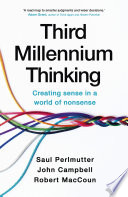

The book emphasizes the importance of adopting a holistic perspective when addressing complex problems. In a world increasingly characterized by interconnectivity, it is crucial to understand that issues cannot be solved in isolation. The author argues that a systems thinking approach enables individuals and organizations to see the bigger picture, recognizing that every action has a ripple effect. By considering the interdependencies between various elements, whether they be social, economic, or environmental, decision-makers can develop more effective and sustainable solutions. This perspective fosters collaboration and innovation, encouraging stakeholders to work together rather than in silos.
Continue readingOne of the core messages of the book is the necessity of embracing change as an inherent part of life and progress. The author discusses how the rapid pace of technological advancement and societal shifts demands adaptability. Rather than resisting change, individuals and organizations should cultivate a mindset that welcomes new ideas and approaches. This involves being open to experimentation, learning from failures, and continuously evolving. The book provides examples of successful organizations that have thrived by embracing change, highlighting the importance of agility in a fast-paced world.
Continue readingThe author advocates for interdisciplinary collaboration as a means to foster innovation and creativity. By bringing together diverse perspectives and expertise from various fields, organizations can tackle complex challenges more effectively. The book illustrates how cross-disciplinary teams can generate novel ideas and solutions that would not be possible within traditional boundaries. This idea is particularly relevant in today’s globalized and interconnected world, where problems often span multiple domains. The author encourages readers to break down silos and promote a culture of collaboration, emphasizing that the best solutions often emerge from the confluence of different disciplines.
Continue readingA significant focus of the book is on the importance of sustainability and ethical considerations in decision-making. The author argues that as we move into the third millennium, the choices we make must prioritize the well-being of future generations. This involves not only environmental sustainability but also social and economic equity. The book discusses various frameworks and models for integrating sustainability into business practices, urging leaders to consider the long-term impact of their decisions. By aligning business goals with ethical principles, organizations can build trust and loyalty among stakeholders, ultimately leading to greater success.
Continue readingThe book delves into the transformative role of technology in shaping our future. The author discusses how advancements in technology can drive innovation, improve efficiency, and enhance quality of life. However, there is also a cautionary note regarding the potential pitfalls of over-reliance on technology. The book encourages readers to critically evaluate the implications of technological developments, considering both the benefits and the risks. By adopting a balanced approach, individuals and organizations can leverage technology as a tool for positive change while remaining vigilant about its societal impacts.
Continue readingEducation is highlighted as a cornerstone for success in the third millennium. The author emphasizes the need for a shift in educational paradigms to prepare individuals for a rapidly changing world. This includes fostering critical thinking, creativity, and emotional intelligence, rather than solely focusing on rote memorization. Lifelong learning is presented as an essential mindset, with the understanding that continuous skill development is necessary to remain relevant in the workforce. The book advocates for educational systems that promote adaptability and resilience, equipping individuals to navigate the complexities of modern life.
Continue readingLastly, the book discusses the characteristics of visionary leadership that are crucial for navigating the challenges of the third millennium. The author outlines the importance of inspiring and empowering others, fostering a shared vision, and cultivating a culture of innovation. Visionary leaders are portrayed as those who can anticipate future trends and mobilize their teams toward common goals. The book provides insights into the qualities that define effective leadership in a rapidly evolving landscape, encouraging readers to develop their leadership skills to drive positive change within their organizations and communities.
Continue reading